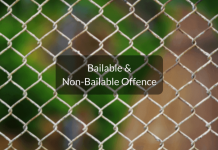This article is written by Nitesh Mahech and Yashika Sharma, BBA LLB students from University School of Law and Legal Studies, GGSIPU.
Table of Contents
Introduction
The increasing number of extrajudicial killings in India is atrocious. The major form is the encounters by police, military, or other security forces which challenge the Rule of Law in a civilized society. Extrajudicial killings manifest outlawed force through which the person is executed illegally. It is a gross human rights violation and the reflection of the apathetic criminal justice system in India. The recent infamous encounters of Vikas Dubey in Uttar Pradesh and the encounter of 4 accused in the Hyderabad gangrape case in 2019 in India put intense indignation over the functioning of police and the legitimacy of the use of force. Also, it puts a lack of faith in the present criminal justice system among people. The Supreme Court of India has instructed to set up an enquiry for both the cases.
This paper aims to analyze the present criminal aspect of encounter killings in India. It also attempts to find out the effective solutions for this menace of police encounters as every person has a right to fair, just and equal trial. Besides the use of force in most encounters are not just an act of self-defence, but rather an act of retaliation or bloodlust by trigger happy police officers with the connivance of the State.
When does it not amount to a criminal offence?
It must be noted that no law in India directly authorises encounters of criminals. The pertinent question that arises here is that in what circumstances a death in an encounter shall not constitute an offence in India. It shall be when:
- firstly, if death is caused in the exercise of the right of private defence i.e., under Section-96 IPC (short for Indian Penal Code, 1860);
- secondly, if death is caused under Section-100 IPC or exception-3 of Section-300 IPC; or
- thirdly, if it is necessary to arrest the person accused of an offence punishable with death or imprisonment for life i.e., under Section-46 CrPC ( short for Code of Criminal Procedure, 1973) which authorises the police to use force, extending up to the causing of death, as the case may be.
Thus, the police officer have the right to injure or kill the criminal for the sole purpose of self-defence or maintaining peace and order. However, nothing must be done with any mala fide or dishonest motive or to settle personal benefit. And if the use of force cannot be justified and death falls outside the scope as per NHRC Guidelines 2010, then it shall be a crime and the police officer shall be guilty of culpable homicide under Section-299 IPC and disciplinary proceedings may be initiated by the concerned Police Department.
Increasing rate of encounter cases
With the above-mentioned provisions in our criminal justice system, there still have been many killings without the sanction of any judicial proceeding. An RTI inquiry revealed that the National Human Rights Commission of India (hereinafter referred to as NHRC) registered a total of 1782 fake encounter cases between the years 2000 and 2017. The state of Uttar Pradesh accounted for the highest number of fake encounter cases, almost 45.55% of the total cases registered and at least 122 alleged criminals were killed in more than 6,000 encounters between March 2017 to June 2020 in the State.
In this regard, NHRC laid down guidelines in 1997 that FIR shall be registered in case of encounter; conduct an immediate investigation on receiving information; grant compensation to the dependant of deceased; and refer the case to other fair investigation agency in case of the policemen belong to the same police station. However, in 2010, these guidelines were extended by including a magisterial enquiry under Section-176 CrPC in case of death within 3 months and mandatory reporting of all encounter deaths to the Commission within 48 hours of happening. A second report within 3 months must also be sent to the Commission under Section-190 CrPC which includes a post mortem report, findings of the magisterial enquiry, etc.
Gross violation of Indian Constitution and Principles
Encounter Killings violate the fundamental rights of criminals as every person has a right to life and liberty which can only be deprived following the procedure established by law under Article-21 of the Constitution. This right extends to all persons without exception, including a fair investigation and trial even if a person is accused of a heinous crime thereby safeguarding the equality before law under Article-14.
Also, an accused person has a fundamental right to have an advocate of his choice for defence under Article-22 which is also a statutory right under Section-303 CrPC. However, in fake encounters, the police assume the role of the judiciary without giving a proper chance to the accused to be heard at an appropriate judicial forum, hence violating the principle of Audi alteram partem. So, it is the responsibility of the police to follow the constitutional principles and uphold the Right to Life of every individual whether an innocent law-abiding citizen or a dreaded criminal.
Repeated condemnation by the Apex Court
The Supreme Court has repeatedly condemned extrajudicial killings of alleged criminals by police officers. In 1992, investigations into such killings in U.P. were entrusted by the Supreme Court in R.S. Sodhi v. State of U.P to the Central Bureau of Investigation to bring in credibility and independence to the process. In 2011, the Supreme Court in Prakash Kadam v. RamPrasad Vishwa Gupta said that when an extrajudicial execution is proved against policemen in a trial, they must be given the death sentence.
Even in 2012, the Supreme Court in Om Prakash v. State of Jharkhand, held that the extrajudicial killings are not legal under our criminal justice administration system and equated it to state-sponsored terrorism. The accused person must be put on trial for which it puts a duty on the police not to kill the person but to arrest him. However, it attracts the question of fleeing suspects for which the non-vital parts of the body should be the main target when there has been no injury to any policemen. The relevant example here is Rohtash Kumar v. State of Haryana dealt by the Supreme Court under which the encounter by the Haryana police was fake.
It often observed that police authorities protect their officers by not initiating proper proceedings against them as Section-197 CrPC requires the sanction of the competent authority for the same but in this regard, the Supreme Court in Parkash Singh v. State of Punjab clearly stated that no prior sanction is required where the act has been carried out for personal benefits.
Again in 2014, the Supreme Court in PUCL v. State of Maharashtra & Ors. reiterated that killings in the encounters by police affect the credibility of the rule of law and the administration of the criminal justice system. And in furtherance of the same, the Supreme Court also issued 16 point guidelines which include preserving pieces of evidence, registering FIR without any delay, video graphing the post-mortem, independent investigation, conducting a magisterial enquiry, and ensuring an expeditious conclusion of a trial.
Current International position
It must be noted that India has been heavily criticised for not ratifying the UN Convention against Torture and Other Cruel, Inhuman or Degrading Treatment or Punishment (UNCAT) of 1987 despite being the World’s largest democracy. The main concern is the violation of rights and lack of transparency as overstepping on the function of the judiciary is fatal. Further, even Article-6 of The International Covenant on Civil and Political Rights, to which India is a party, states that “every human being has the inherent right to life and this right shall be protected by law. No one shall be arbitrarily deprived of his life.”
Conclusion
The judicial decision in Vineet Narain v. UOI in 1998 concerning an anti-corruption case sets a strong precedent as the Apex Court asserted its power to monitor investigations, appoint amicus curiae, and continuously hold investigative agencies accountable. The same approach can be followed in extrajudicial killings. Further, the National Police Commission, 1977-81 suggested that superintendence be defined in the law to exclude instructions that interfere with due process of law. Also, the Second Administrative Reforms Commission has recommended that political control be limited to promoting professional efficiency and ensuring that the police officer is acting under the law.
But apart from this, these encounter deaths raise many a question like what if those killed are innocents? What if it leads to abuse of power? What if these killings remove proof of some other influential people involved? To combat this growing trend, these killings need to be independently investigated free from police or political interference to fix culpability on the police officers and end the prevalent culture of impunity. Police reforms are also needed to sensitise them to function within four corners of the constitutional responsibility and the Rule of Law prevails above all.
Furthermore, the Supreme Court’s and the NHRC’s guidelines must be strictly adhered to and followed up by judicial authorities. In a broader perspective, there is a need for a complete overhaul of the criminal justice system to rebuild its lost credibility and fast track procedure. And lastly, the media should avoid labelling extrajudicial killings as heroic acts as it shakes the faith of people in our criminal justice system.
LawSikho has created a telegram group for exchanging legal knowledge, referrals and various opportunities. You can click on this link and join:
 Serato DJ Crack 2025Serato DJ PRO Crack
Serato DJ Crack 2025Serato DJ PRO Crack











 Allow notifications
Allow notifications



